Staff who served Monaco's Prince Rainier III bore his coffin from the 17th-century chapel in his palace where he had lain in state, a somber beginning to funeral ceremonies yesterday that drew VIPs from around the world.
Dressed in black and bearing roses of red and white, members of the palace's 170-strong staff lined the courtyard outside the Palatine Chapel to bid the prince a final farewell.
Prince Albert II, Rainier's son and heir, emerged from the palace apartments, flanked by his sisters, Princesses Caroline and Stephanie, who both wore headscarves of black lace.
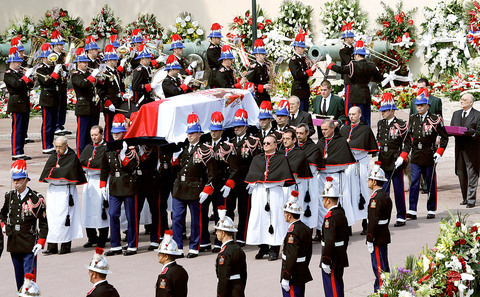
PHOTO: AFP
In accordance with Rainier's wishes, soldiers from the Prince's Company of Carabineers then carried his coffin out of the palace via the Gate of Honor. Carabineers, wearing hats of red, white and blue plumes that shuddered slightly in the breeze, played fanfares of trumpets and beat drums covered with black cloth.
Rainier's coffin was draped in a red and white flag emblazoned with the coat of arms of his Grimaldi family. Rainier's children, some of his grandchildren and other members of his close family walked behind.
Rainier's 6 1/2-year-old dog Odin, a present for the 50th year of his reign, formed part of the funeral cortege, limping slightly. The Gate of Honor was closed symbolically after Rainier's body was carried out.
The cortege filed from the palace, past hundreds of mourning Monaco residents dressed somberly, to the 19th-century Monaco Cathedral where Rainier will be buried. That was also where Rainier married Hollywood star Grace Kelly in 1956, putting his tiny sun-kissed Mediterranean principality firmly on the map.
Europe's royals, nobles, and VIPs from around the world -- dressed almost uniformly in black -- waited in the cathedral for the cortege. Some bowed their heads as the coffin was carried up the aisle. Fashion designer Karl Lagerfeld's white hair made him easy to spot in the crowd. A sword was placed on Rainier's coffin.
Archbishop Bernard Barsi, opening the service, said Rainier had "entered into the sleep of death." and had been a father "both loving and loved."
Rainier -- who had been Europe's longest-serving monarch -- died April 6 of heart, kidney and breathing problems after struggling with failing health for years.
More than half a dozen heads of state, and other dignitaries from some 60 countries, traveled to Monaco, which is smaller than New York City's Central Park but renowned as a playground for the rich and famous.
After paying their respects to Rainier's coffin and his family, VIPs somberly walked on foot from the palace to the cathedral for the religious service.
Mourners included French President Jacques Chirac, Irish President Mary McAleese, Belgium's King Albert II, Spain's King Juan Carlos and Queen Sofia and royalty from Sweden, Luxembourg and elsewhere.
For many in Monaco, where Rainier ruled for 56 of his 81 years, the day marked the end of a golden era that began with his marriage to Princess Grace. Rainier never remarried after her death in a car accident in 1982 -- and often cut a lonely figure in his latter years.
"I like this family ... It's thanks to Rainier that Monaco became what it did," said Arthur Alves, 60, who works in the thriving building sector. "It's a bit the soul of Monaco, its image around the world that we are saying goodbye to today."
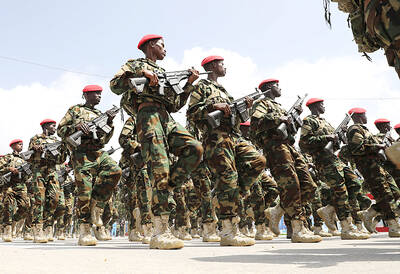
ELECTION DISTRACTION? When attention shifted away from the fight against the militants to politics, losses and setbacks in the battlefield increased, an analyst said Recent clashes in Somalia’s semi-autonomous Jubaland region are alarming experts, exposing cracks in the country’s federal system and creating an opening for militant group al-Shabaab to gain ground. Following years of conflict, Somalia is a loose federation of five semi-autonomous member states — Puntland, Jubaland, Galmudug, Hirshabelle and South West — that maintain often fractious relations with the central government in the capital, Mogadishu. However, ahead of elections next year, Somalia has sought to assert control over its member states, which security analysts said has created gaps for al-Shabaab infiltration. Last week, two Somalian soldiers were killed in clashes between pro-government forces and
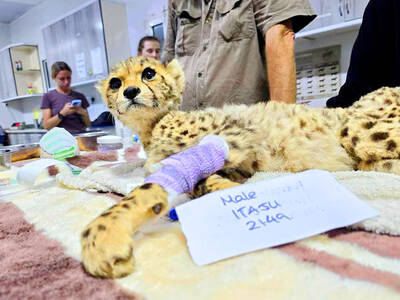
Ten cheetah cubs held in captivity since birth and destined for international wildlife trade markets have been rescued in Somaliland, a breakaway region of Somalia. They were all in stable condition despite all of them having been undernourished and limping due to being tied in captivity for months, said Laurie Marker, founder of the Cheetah Conservation Fund, which is caring for the cubs. One eight-month-old cub was unable to walk after been tied up for six months, while a five-month-old was “very malnourished [a bag of bones], with sores all over her body and full of botfly maggots which are under the
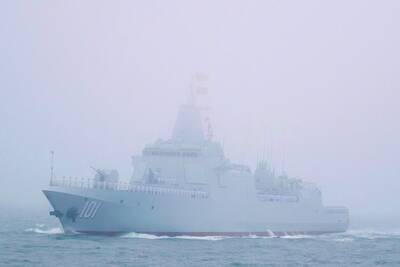
BRUSHED OFF: An ambassador to Australia previously said that Beijing does not see a reason to apologize for its naval exercises and military maneuvers in international areas China set off alarm bells in New Zealand when it dispatched powerful warships on unprecedented missions in the South Pacific without explanation, military documents showed. Beijing has spent years expanding its reach in the southern Pacific Ocean, courting island nations with new hospitals, freshly paved roads and generous offers of climate aid. However, these diplomatic efforts have increasingly been accompanied by more overt displays of military power. Three Chinese warships sailed the Tasman Sea between Australia and New Zealand in February, the first time such a task group had been sighted in those waters. “We have never seen vessels with this capability
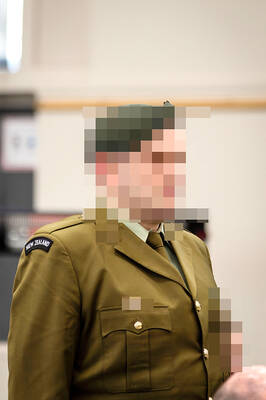
‘NO INTEGRITY’: The chief judge expressed concern over how the sentence would be perceived given that military detention is believed to be easier than civilian prison A military court yesterday sentenced a New Zealand soldier to two years’ detention for attempting to spy for a foreign power. The soldier, whose name has been suppressed, admitted to attempted espionage, accessing a computer system for a dishonest purpose and knowingly possessing an objectionable publication. He was ordered into military detention at Burnham Military Camp near Christchurch and would be dismissed from the New Zealand Defence Force at the end of his sentence. His admission and its acceptance by the court marked the first spying conviction in New Zealand’s history. The soldier would be paid at half his previous rate until his dismissal